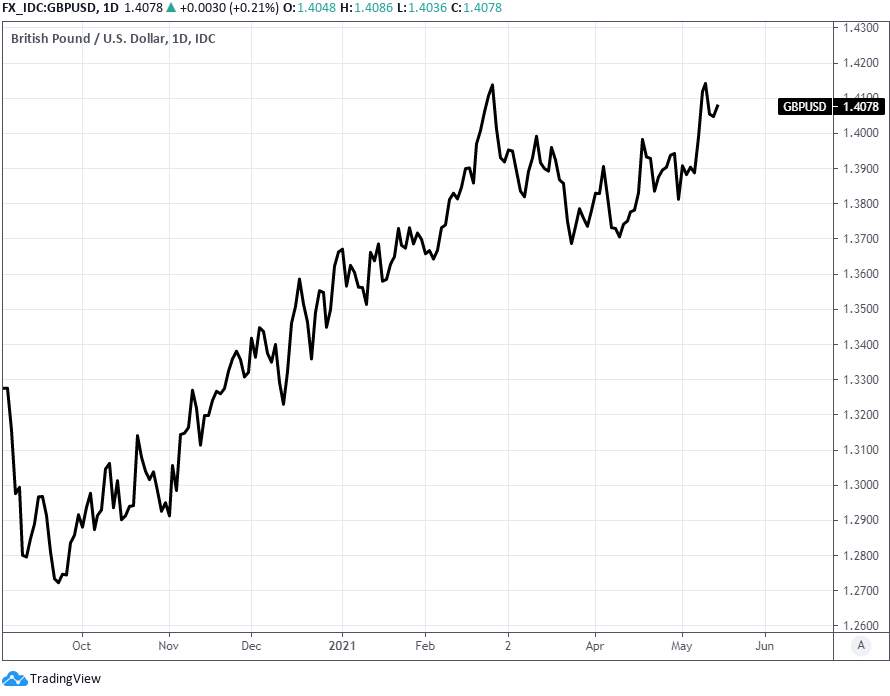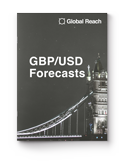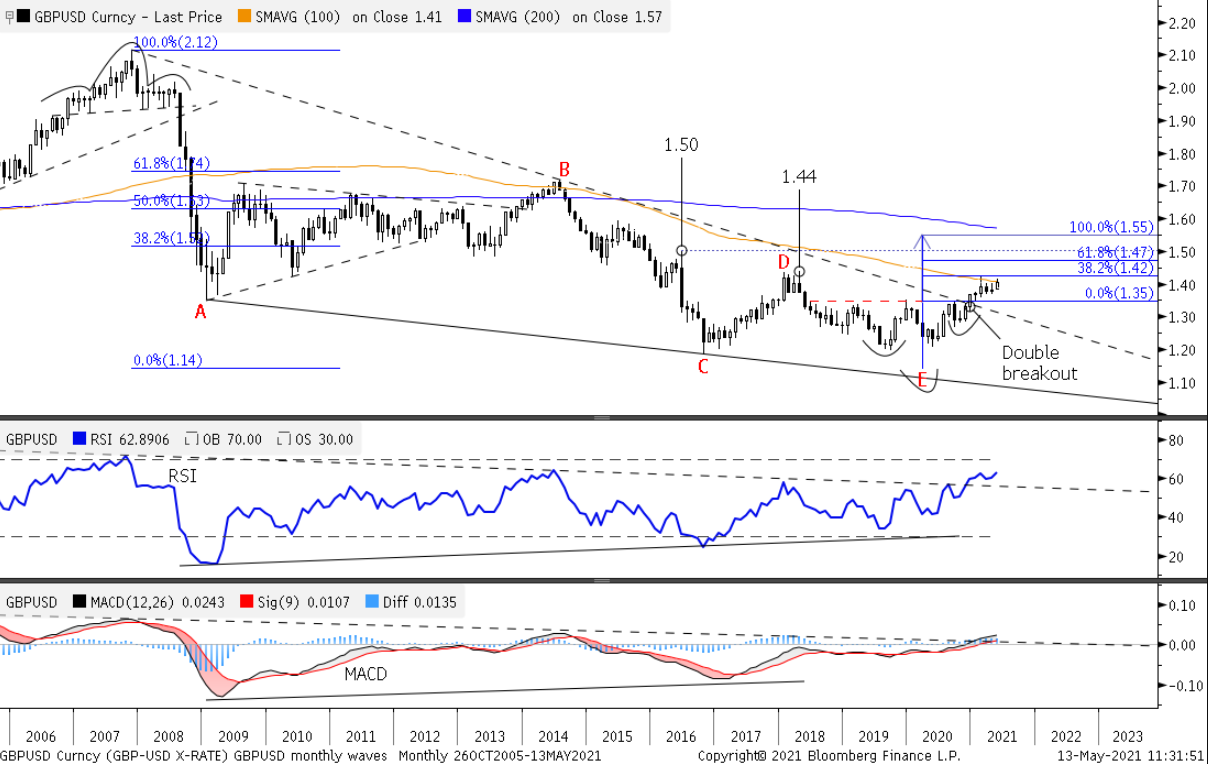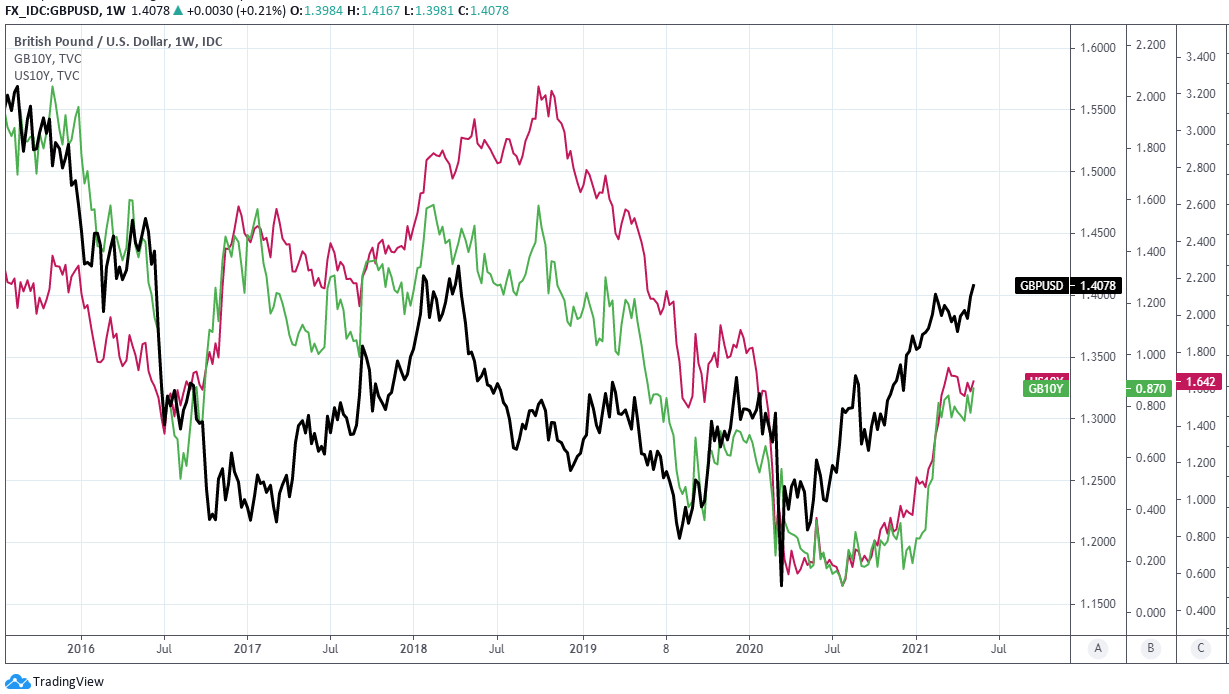Pound-Dollar Rate Cements Grip On 1.40 but Faces New Risks
- Written by: James Skinner
- GBP advances as USD relents & UK yields rally
- U.S. data looms as inflation uncertainties rise
- As new virus risks emerge on radar for GBP
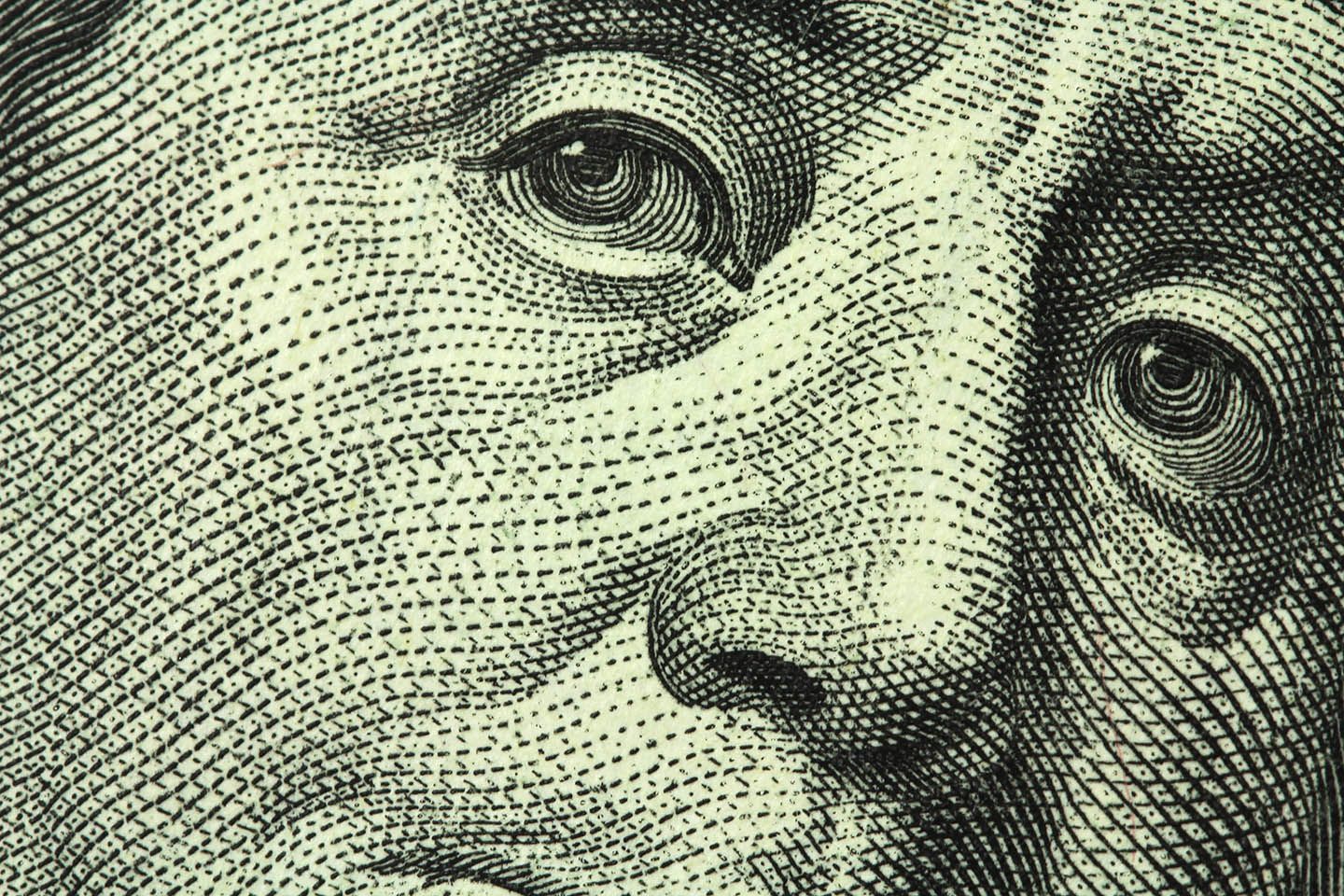
Image © Adobe Images
- GBP/USD reference rates at publication:
- Spot: 1.4084
- Bank transfers (indicative guide): 1.3693-1.3792
- Money transfer specialist rates (indicative): 1.3838-1.3987
- More information on securing specialist rates, here
- Set up an exchange rate alert, here
The Pound-to-Dollar exchange rate was on course to retest the nearby 1.41 level ahead of the weekend but with the market recently proving hesitant to let go of the greenback for very long, and new risks now emerging on Sterling’s radar; any new highs for the Pound could be slow to materialise.
Sterling advanced against a retreating Dollar on Friday and at the tail-end of a volatile week that has left investors none the wiser about the medium-term outlook for inflation and Federal Reserve (Fed) interest rates, which has been the main driver of recent swings in GBP/USD as well as the broader market.
Meanwhile, the Dollar gave ground to all major rivals but was still up against many for the week, with those gains coming after inflation jumped to more than twice the 2% target of the Fed for the month of April when data was released this Wednesday.
Inflation data appeared to prompt speculation the Fed could cut back its quantitative easing (QE) programme or lift interest rates sooner than it’s so-far guided for, leading to a rally by the Dollar and increases in bond yields earlier this week.
The Dollar was unable to hold onto gains however, enabling the Pound-Dollar rate to find support just above the 1.40 level earlier this week.
“The bias has shifted to the upside but GBP/USD has to close above the year-to-date high of 1.4240 before a sustained advance can be expected” says Quek Ser Leang, a strategist at UOB.
Above: Pound-to-Dollar exchange rate shown at daily intervals.
The rub for investors and the Pound however is the growing line of domestic and international developments that are threatening to lift price pressures in the short-term and further prolong the point at which the market can be confident about the likely timing of any decision by the Fed to lift interest rates.
“The USD does not seem all that far off from an inflection point; we think that inflection point in the USD will be another leg lower vs the EUR and the GBP if Fed 'dovishness' in the face of rising inflation pressures causes real USD rates to drop further (or if USTs significantly outperform European debt),” says Stephen Gallo, European head of FX strategy at BMO Capital Markets.
Prolonged uncertainty could see investors remain reluctant to let go of the greenback for very long, which may in turn limit any further GBP/USD gains for the time being, although with European bond yields picking up and their U.S. counterparts having struggled to sustain their recent upward momentum, BMO’s Gallo and others say another break higher may now be just a matter of time for Sterling.
{wbamp-hide start}
GBP/USD Forecasts Q2 2023Period: Q2 2023 Onwards |
“This month's spot looks forward to a close above the 100m SMA at 1.41 for more bullish confirmation. Should a dip that commonly retests the neckline of the head and shoulders bottom in the 1.35s occur, we'd consider buying,” says Paul Ciana, chief technical strategist at BofA Global Research.
The Fed has maintained that it's unlikely to adjust its policy settings until “substantial further progress” has been made toward repairing the job market and has committed to keeping borrowing costs near to zero until inflation has spent enough time above the 2% level for it to also then average the target over an unspecified period.
“The weak NFP last week was a surprise, both for markets and for us. Even though this was just one print, it is USD negative. Indeed, our short-term indicators have turned against the USD. This is a good environment for commodity FX,” says Athanasios Vamvakidis, head of FX strategy at BofA Global Research and a colleague of Ciana's.
Above: Pound-to-Dollar exchange rate chart with technical analysis, indicators. Source: BofA Global Research.
The above is something that could take a lengthy period of time and which would be bearish for the U.S. Dollar outlook.
Attainment of the Fed’s job and inflation objectives seemed less likely any time soon when the April non-farm payrolls report missed market expectations by a country mile last week, which has helped to reduce U.S. bond yields and provided support to the Pound-Dollar rate in recent days although Sterling will now also have to contend over the coming days and weeks with mounting economic risks at home including government concerns about a new strain of coronavirus.
“The bottom structure has progressed plenty this year with monthly closes above 1.35 signalling a long term uptrend. This formed a head and shoulders bottom and wedge bottom. The head and shoulders bottom pattern estimates upside to 1.47 and 1.55. From this view it doesn't seem difficult to see GBP/USD retracing up to the Brexit day high in 2016 of 1.50,” BofA’s Ciana says in reference to GBP/USD.
Above: Pound-to-Dollar exchange rate shown at weekly intervals with 10-year UK and U.S. bond yields.
Prime Minister Borish Johnson said on Thursday that he “can see nothing” to dislodge him or the government from current plans to reopen supposedly non-essential parts of the economy in line with current plans, which envisages a complete reopening in late June.
“GBP is largely holding onto recent gains and progress on the Indian variant of the virus is yet to have any impact. Yet this needs to be watched,” says Petr Krpata, chief EMEA strategist for currencies and bonds at ING.
Implied in Johnson's remarks this week was a suggestion that there are circumstances in which the plans could be delayed or restrictions reimposed, which would inevitably impact the Pound’s relative appeal to investors given how the UK’s vaccination campaign has been so widely cited as a driver of Sterling’s strong performance this year.
That could go into reverse if the arrival and nascent spread of the ‘Indian variant’ of the coronavirus scuppers what is otherwise expected to be one of the major economies’ fastest recoveries for 2021.
In the meantime Sterling exchange rates are likely to take their cues from UK employment and inflation figures for April, which are out on Tuesday and Wednesday next week and could help build support for the Pound above 1.40 and lift British bond yields further if they surprise on the upside of expectations.

